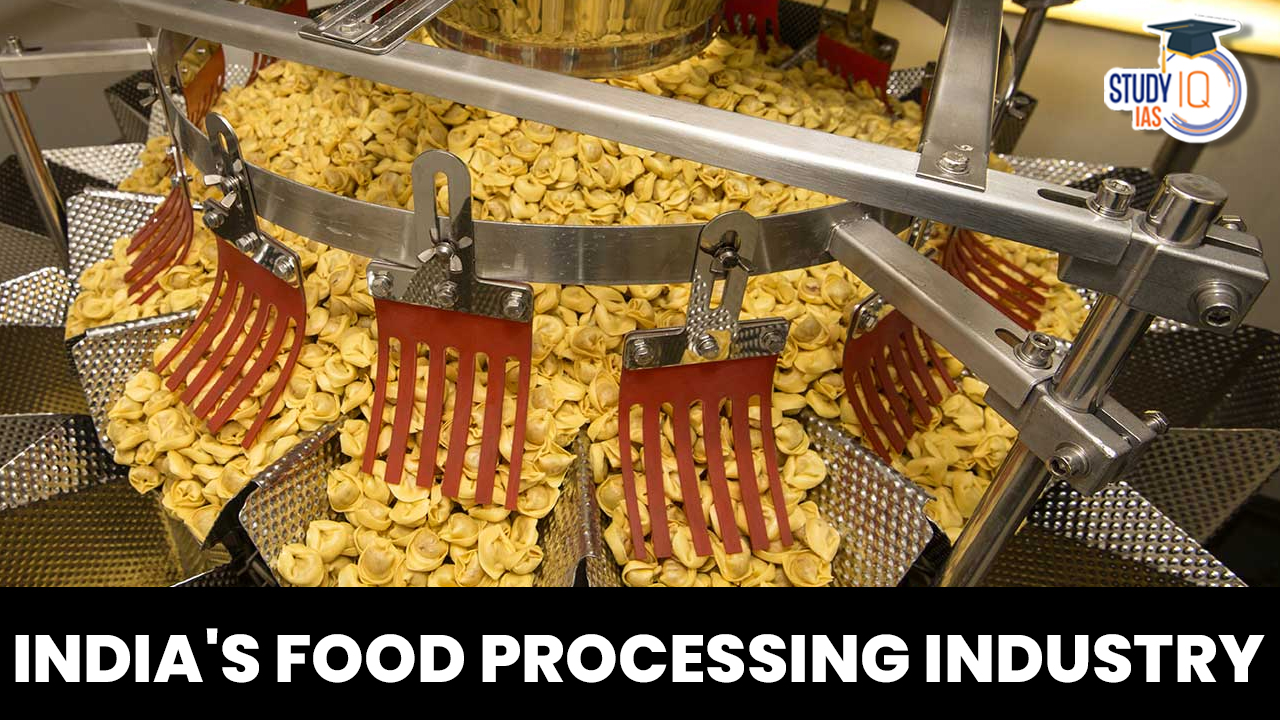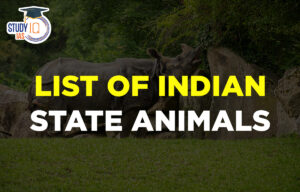Table of Contents
Context: As per the Ministry of food processing industries, the food processing industry has made an investment of ₹7,427 crore under the production-linked incentive (PLI) scheme so far.
More on News
- As of the end of the financial year 2021-22, an incentive of ₹517.604 crore has been disbursed to beneficiaries under the PLI scheme.
- The PLI scheme for the food processing industry (PLISFPI) was approved in March 2021, with a total outlay of ₹10,900 crore. It is designed to be implemented over a seven-year period until 2026-27.
- The PLISFPI consists of three main components:
- Incentivizing manufacturing in four major food product segments: ready-to-cook/ready-to-eat foods, processed fruits & vegetables, marine products, and mozzarella cheese.
- Promoting innovative/organic products of small and medium enterprises (SMEs).
- Supporting branding and marketing efforts for Indian food brands in overseas markets.
- The PLISFPI consists of three main components:
- A recent KPMG report predicts significant growth in the Indian food processing market. It estimates that the market is expected to expand to $470 billion by the year 2025, a substantial increase from $263 billion in the fiscal year 2019-20.
What is Food Processing?
- Food processing refers to the transformation of raw agricultural products or ingredients into processed or value-added food products through various methods and techniques.
- It involves a series of operations that change the physical, chemical, or biological properties of food materials to make them more suitable for consumption, extend their shelf life, enhance their flavour, improve their nutritional value, and make them more convenient for storage, distribution, and consumption.

Significance of Food Processing Industry for India
- Enhancing Farmer’s Income: Food processing provides a market for agricultural produce beyond the raw form, allowing farmers to earn better returns on their crops.
- Also, value addition through processing increases the economic viability of farming.

- Minimizing Wastage: The food processing industry helps reduce post-harvest losses by providing facilities for proper storage, transportation, and processing.
- India’s post-harvest fruit and vegetable losses are over Rs 2 lakh crore annually, owing to inadequate cold storage facilities and lack of proper food processing units, a study has said.
- Export Promotion: Processed food products, with proper packaging and quality assurance, have greater potential to tap into international markets, earning valuable foreign exchange.
- In India, processed food contributed 22.6% share of Agri-food exports in 2021-22.
- Employment Generation: The industry generates direct and indirect employment opportunities.
- From agricultural processing to manufacturing and distribution, the sector provides jobs across various skill levels, contributing to economic growth and livelihoods.
- The number of persons engaged in the registered food processing sector increased from 17.73 lakh in 2014-15 to 20.05 lakh in 2018-19.
- Nutritional Improvement: Processed foods can be fortified with essential vitamins and minerals, addressing nutritional deficiencies in the population and helping combat malnutrition.
- Crop Diversification: Food processing creates demand for various types of agricultural produce, leading to crop diversification.
- This diversification is crucial for soil health, sustainability, and overall agricultural growth.
Indian Food Processing Sector

- The Indian food and grocery market is the world’s sixth largest, with retail contributing 70 per cent of the sales.
- The Indian food processing industry accounts for 32% of the country’s total food market, one of the largest industries in India and is ranked fifth in terms of production, consumption, export and expected growth.
- It contributes around 8.80 and 8.39% of Gross Value Added (GVA) in Manufacturing and Agriculture respectively, 13% of India’s exports and 6% of total industrial investment.
- The Indian gourmet food market is currently valued at US$ 1.3 billion and is growing at a Compound Annual Growth Rate (CAGR) of 20 per cent
Concerns and Challenges

Government Initiatives
- PM Kisan Sampada Yojana: This scheme is aimed at promoting entrepreneurs in setting up food processing units, closer to agricultural areas. Development of cold storage facilities, specialised packaging units, warehousing facilities, etc and other preservation facilities are eligible for grants under the scheme. The scheme provides a grant in aid of 35% of the eligible project cost in most states and 50% of the project cost in North-east and Himalayan states.
- PM Formalisation of Micro Food Processing Enterprises Scheme: This scheme aims at helping small micro-units engaged in the food processing industry. Many businesses at the grass-root level such as chilli drying, spice packaging, pickle, and papad making engage directly with farmers. Recognising the role of such micro-units, a 35% subsidy can be availed by such units on their project cost, up to a maximum of ₹10 lacs
- Operation Greens: In the budget 2018-19, the government announced the Operations Greens scheme to promote integrated value chain development for crops. They are tomato, potato, onion. Post-harvest processing facilities will be eligible for a grant in aid of up to 50% of the project cost. It also subjects to the maximum limit of 50 crores
- National Mission on Food Processing (NMFP): The National Mission on Food Processing is a centrally sponsored scheme aimed at decentralizing the implementation of food processing-related schemes through state and district-level missions. This approach enhances state participation, improves planning, supervision, monitoring, and policy formation.
- Mega Food Parks Scheme: The Mega Food Park Scheme focuses on creating processing hubs that connect farmers, processors, and retailers. These hubs aim to maximize value addition, reduce wastage, increase farmers’ income, and generate employment opportunities, especially in rural areas.
- Cold Chain Infrastructure Scheme: The Integrated Cold Chain, Value Addition, and Preservation Infrastructure Scheme promote the establishment of cold chain facilities for seamless preservation of food products from farm gate to consumer.
- Shift from Product Approval to Ingredient-Based Approval (2016): The Food Safety and Standards Authority of India (FSSAI) shifted from product-by-product approval to an ingredient and additive-based approval process. This change simplifies the approval process and facilitates ease of doing business in the food processing sector.
- 100% FDI Approval for Food Processing Sector (Automatic Route): The government permitted 100% Foreign Direct Investment (FDI) approval under the automatic route for the food processing sector. This move encourages foreign investment and technology infusion in the sector.
- Special Food Processing Fund with NABARD: A Special Food Processing Fund of Rs. 2000 crore was established in partnership with the National Bank for Agriculture and Rural Development (NABARD). This fund provides affordable credit for investments in setting up Mega Food Parks (MFP) and processing units within them, as well as for Agro-Processing Clusters and individual manufacturing units.
- Vision 2015 for Food Processing: A Vision Document (Vision 2015) was developed to outline a strategy and action plan for the growth of the food processing sector. The vision includes targets such as increasing the processing of perishables, enhancing value addition, and expanding India’s share in global food trade.
- Modernization of Abattoirs Scheme: This scheme aims to modernize abattoirs (slaughterhouses) with scientific and sanitary facilities. It encourages private sector participation and technology infusion, improving the supply of hygienic raw materials for meat processing and exports.


 Daily Quiz 17 April 2025
Daily Quiz 17 April 2025
 Nilgiri Biosphere Reserve, Map, Climate,...
Nilgiri Biosphere Reserve, Map, Climate,...
 Complete List of Indian State Animals
Complete List of Indian State Animals





















